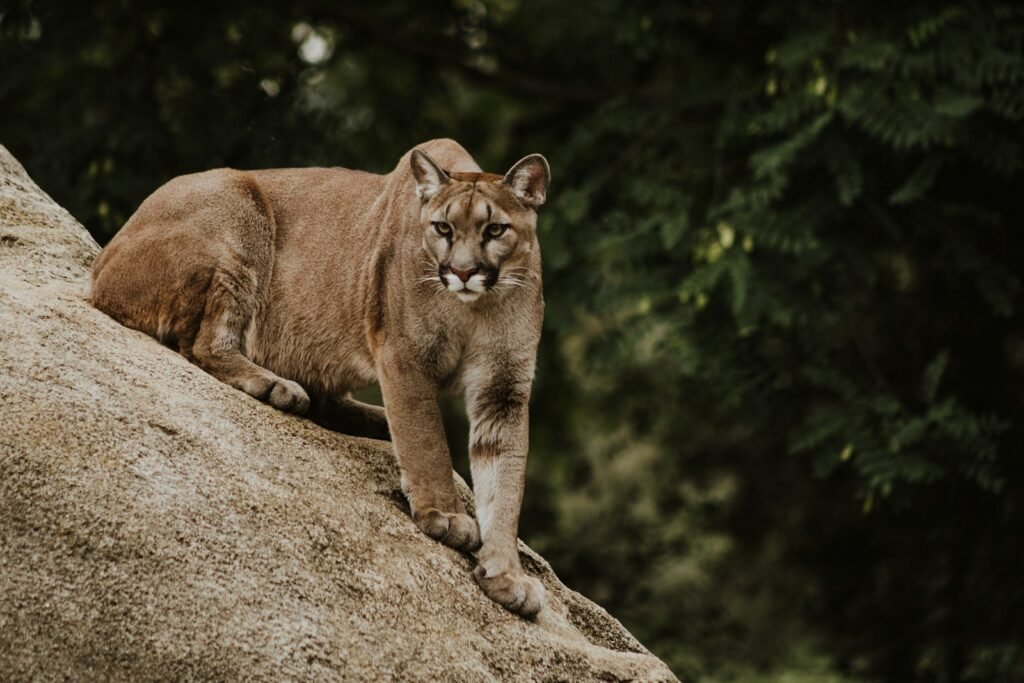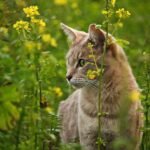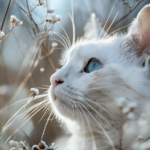Have you ever wondered if animals experience grief like humans do? The majestic big cats of the wild have been observed displaying behaviors that suggest they mourn their lost companions. This emotional complexity adds a layer of depth to these creatures that many might not expect. It’s a heartwarming yet heartbreaking reminder of the intricate world of emotions that exists beyond our human experience. As we delve into the lives of these fascinating felines, we uncover stories that are both inspiring and poignant. Let’s explore the eight big cats that have been seen mourning their lost companions.
Lions: The Social Kings of the Jungle
Lions are known for their strong social structures, living in prides that are often compared to close-knit families. When a member of the pride dies, lions have been observed exhibiting signs of mourning. They may linger around the body, nuzzling it gently as if trying to wake their fallen comrade. This behavior suggests a deep connection and understanding of loss within the pride. The bond between lions is not just for survival; it is an emotional connection that mirrors the complexities of human relationships. The sight of a lioness mourning her cub is particularly heart-wrenching, as it reveals the depth of maternal love and loss. As the kings of the jungle, lions remind us that even the mightiest creatures are not immune to grief.
Tigers: Solitary Yet Sentimental
Tigers are typically solitary animals, but that doesn’t mean they don’t form bonds. In the rare instances when they do form connections, the loss of a companion can lead to noticeable changes in behavior. Tigers have been seen pacing restlessly and vocalizing mournfully after the death of a mate or cub. This suggests a sense of loss and longing that is deeply felt. The solitary nature of tigers makes their mourning behaviors even more poignant, as it highlights the significance of the bond they had formed. The emotional world of tigers is a testament to the complexity of their inner lives, challenging the notion that they are merely fierce predators. These majestic creatures remind us that even in solitude, there is room for love and loss.
Leopards: Silent Sufferers
Leopards are elusive and solitary, making their mourning behaviors harder to observe. However, there have been instances where leopards have been seen staying close to the bodies of their deceased companions, almost as if keeping vigil. This silent suffering speaks volumes about the emotional capacity of these mysterious cats. Leopards may not have the social structures of lions, but their solitary lives do not preclude them from forming meaningful connections. The death of a cub or mate can lead to a period of mourning, marked by a noticeable change in behavior. This quiet grief is a reminder that emotions are not always loud and visible; sometimes, they are felt in the silent moments of solitude.
Cheetahs: The Fast and the Feeling
Cheetahs are known for their speed, but they also possess a surprising emotional depth. When a cheetah loses a companion, especially a cub, the mother may stay with the body for extended periods, showing signs of distress and reluctance to leave. This behavior indicates a profound sense of loss and maternal attachment. Cheetahs may not be as socially complex as lions, but the bond between a mother and her cub is undeniable. The sight of a cheetah mourning her lost cub is a poignant reminder of the universal nature of maternal love. Even in the fast-paced world of survival, there is time for grief and remembrance.
Snow Leopards: Ghosts of the Mountains
Snow leopards, often called the “ghosts of the mountains,” live in the remote and harsh environments of Central Asia. Despite their solitary nature, snow leopards have been observed displaying mourning behaviors. When a cub or mate dies, a snow leopard may stay near the body, showing signs of distress and reluctance to move on. This behavior suggests an emotional depth that is often overlooked in these elusive creatures. The harsh environment they inhabit makes their mourning even more poignant, as it highlights the strength of the bonds they form. In the silent, snowy landscapes, snow leopards remind us that even the most elusive creatures have hearts that feel.
Jaguars: The Silent Guardians
Jaguars are powerful and solitary, often seen as the silent guardians of the jungle. When a jaguar loses a companion, it may exhibit changes in behavior that suggest mourning. This can include vocalizations, reduced activity, and a reluctance to leave the area where the companion was lost. The emotional world of jaguars is complex, and their mourning behaviors reveal a side of them that is rarely seen. The loss of a cub or mate can have a profound impact, leading to a period of mourning that is both touching and tragic. In the dense jungles, jaguars remind us that even the fiercest predators have hearts that ache with loss.
Pumas: The Mountain Lions of Grief

Pumas, also known as mountain lions or cougars, are solitary creatures that roam vast territories. Despite their solitary nature, they have been observed displaying behaviors that suggest mourning. When a cub or mate dies, a puma may stay near the body, vocalizing and showing signs of distress. This behavior indicates a deep emotional connection and a capacity for grief. The solitary lives of pumas make their mourning behaviors even more significant, as it highlights the importance of the bonds they form. In the rugged landscapes they inhabit, pumas remind us that even in solitude, there is room for love and loss.
Clouded Leopards: The Enigmatic Mourners
Clouded leopards, with their striking coats and mysterious nature, are among the most enigmatic of the big cats. Despite their elusive nature, they have been observed exhibiting mourning behaviors. When a companion dies, a clouded leopard may stay near the body, showing signs of distress and reluctance to leave. This behavior suggests a deep emotional capacity that is often overlooked in these secretive cats. The loss of a cub or mate can lead to a period of mourning, marked by changes in behavior and vocalizations. In the dense forests they inhabit, clouded leopards remind us that even the most enigmatic creatures have hearts that feel.
Conclusion
The world of big cats is filled with emotions that mirror our own. The mourning behaviors of these majestic creatures remind us of the deep connections that exist in the animal kingdom. As we marvel at their strength and beauty, we are also reminded of their vulnerability and capacity for love. These stories of mourning and loss challenge our perceptions and invite us to see the world through a different lens. What other hidden emotions might these magnificent creatures hold?

Growing up traveling and experiencing new cultures and wonders, I have had a passion for nature, adventuring, photography, and videography. I am currently working towards a BSc in Biodiversity and Ecology at Stellenbosch University, and I hope to specialise in Marine Sciences one day.
Please send any feedback to Feedback@animalsaroundtheglobe.com






